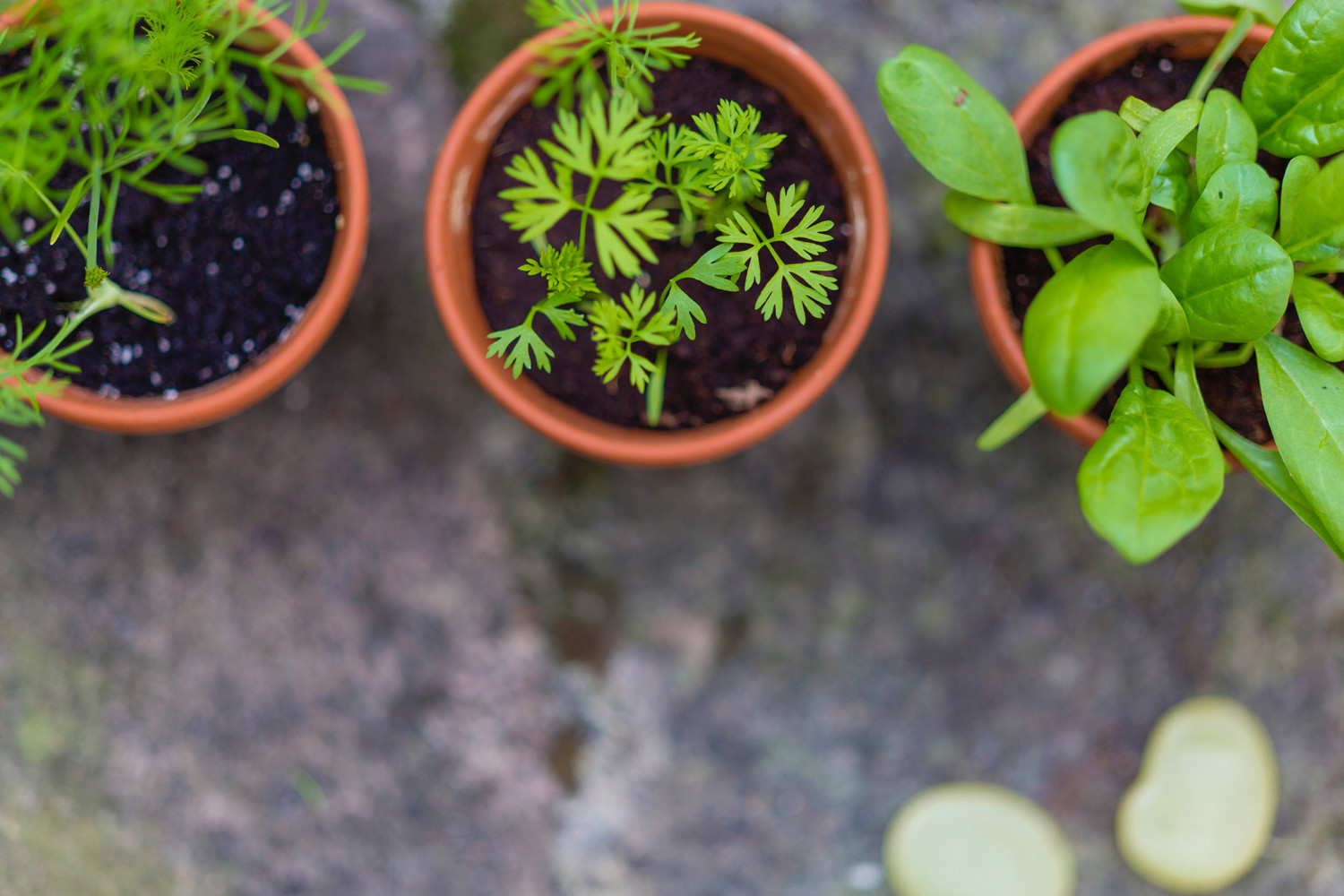Getting a bit stir crazy cooped up inside during COVID-19 shelter-in-place? Us too. We know a lot of you guys have been cooking for yourselves at home so you’re probably wondering about the same things we are–like, can we grow some of our frequently purchased produce at home? If you find yourself constantly using certain grocery items, it might be a good idea to set up your own little garden at home.
There are so many benefits to growing your own produce at home. Most common produce items are extremely easy to grow. All you need is some water and some sunlight to grow most of these fruits, vegetables, and herbs from their otherwise discarded scraps!
- You can control what goes into your produce–it doesn’t get more organic than this.
- You’ll end up saving money in the long run! If you’re constantly buying garlic, or if onions are a staple in your home cooking, it might be worthwhile to start growing your own!
- Especially during shelter-in-place, grocery shopping has become difficult in some regions where high demand for certain produce has resulted in scarcity. Seriously–have you tried driving to 6 different stores just to find fresh basil? It’s brutal. Growing your own produce at home means you’ll have your own supply, and no need to worry about finding it at your local store.
- Produce from the safety of home. It’s important for your health to limit exposure, which is why staying at home helps to flatten the curve and reduce new cases of COVID-19. Having your own supply of fresh produce reduces the need for you to go out and find your essential ingredients.
- It’s sustainable. You produce what you like to eat, and chances are, that doesn’t include harmful pesticides that are detrimental to the environment. Plus, there’s no need to wrap up your produce in a plastic produce bag either (although, we like to use reusable produce bags anyway), or worrying about extra packaging or the cleanliness of your produce.
Seriously, there has never been a better time to start your own home garden than now!
Scallions
Green onions, also known as scallions, are super easy to grow and they grow FAST. Just cut off 1-2 inches (2-5 cm) from the root of each scallion stalk and place them in a glass jar with clean water. Replace the water daily to ensure healthy growth. If you want to foster the growth of these more, transfer the growing scallions into nutrient-rich soil in a pot. Otherwise, growing them in the jar on your countertop works fine too. Just trim off what you need and replace the water frequently.
Garlic
Garlic is used in many different cuisines so it’s no surprise that this might be something you’re using quite frequently nowadays. To grow garlic from the grocery store, it must be organic to ensure it hasn’t been treated with pesticides and or treated to prevent sprouting. You’ll want to select a large clove from the bulb–preferably one that has sprouted slightly already. Place the clove in a shot glass with water just filled above the root end of the clove. Once the clove has sprouted roots, transfer to a pot with soil and cover the entire clove, leaving the sprouted end above the soil surface.
Basil
This fragrant herb provides flavor and aromatics to any dish. They can be quite expensive, and oftentimes we don’t end up using all the basil before it goes bad–bummer! Luckily, these can be planted quite easily. Take a single stalk of basil and put it in a glass with water and change the water every other day until you notice roots beginning to sprout from the base of the stalk. Once this occurs, transfer the basil into a pot with soil, water, and watch it flourish.
For that matter, mint, cilantro, thyme, rosemary, and oregano are all highly successful herbs to regrow from kitchen scraps using the same method.
Lemongrass
Lemongrass can be placed into a jar with water until roots begin to sprout. When this happens, transfer the lemongrass into a pot with soil. Water these every day for the first week. They need lots of direct sunlight, so make sure you put them in a spot that gets plenty of sun. It’ll take 4-6 months before you can harvest. When it comes to harvesting, trim your stalks (leaving 1-2inches in the soil) and freeze the lemongrass until its needed.
Lettuce
Cut off the base of the lettuce and put into a shallow bowl half full of water. Be sure to change the water in the bowl every couple of days. You’ll begin to see leaves sprouting from the original stems. You can continue to harvest and trim the leaves for salads or sandwiches! They won’t get as large as the original bunch through this method, but you’ll definitely get more out of the lettuce you purchased from the store. There isn’t always success with lettuce, so it’s a good idea to keep trying if your lettuce isn’t producing new leaves.
Celery
Celery is a relatively easy vegetable to grow from kitchen scraps. Cut off the base where the stalks meet, and place into a bowl of water. Once it starts sprouting new leaves, you can leave them in the bowl or continue to let the flourish be transferring them to a pot with soil. Cover the base with soil, leaving only the new sprouts visible and water daily.
Get creative with your garden! We don’t know how long this shelter-in-place will be but we can make the most of it and pick up a new hobby–like gardening. I mean who could complain about fresh home-grown food?
